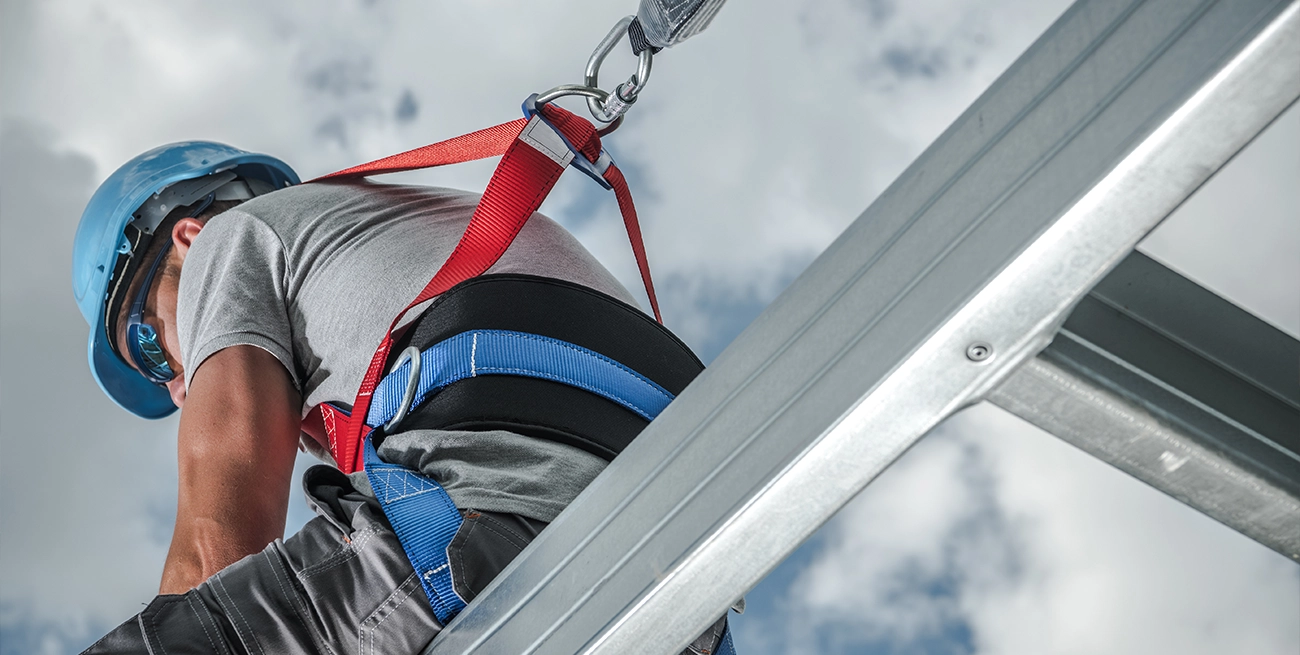Fall Protection: Essential Equipment and Practices for Industrial Workplaces

Working at heights is one of the most hazardous tasks in industrial settings. The risks are significant, and the stakes are high. Proper fall protection is not just about compliance with regulations—it’s a critical aspect of workplace safety that saves lives. Selecting the right equipment and adopting effective practices are key for preventing accidents.
The Role of Equipment in Preventing Falls
Fall protection starts with the gear. The right equipment provides a barrier between the worker and a potential fall, mitigating risk in environments where hazards are unavoidable. Here’s a breakdown of the essential gear:
1. Harnesses
Harnesses are the foundation of personal fall arrest systems. They are designed to distribute force evenly across the body in the event of a fall, reducing the likelihood of injury. Look for features such as:
- Padding for comfort during extended use.
- Multiple adjustment points to ensure a secure fit.
- Built-in trauma straps to reduce suspension trauma after a fall.
Proper inspection of harnesses before every use is non-negotiable. Check for fraying, cuts, or corrosion on metal parts. Workers should also be trained on how to put on a harness correctly; even the best equipment can fail if used improperly.
2. Anchorage Points
Anchors serve as the fixed connection point for fall protection systems. Depending on the job site, they might include permanent fixtures, such as beams, or temporary solutions, like roof anchors. When selecting an anchor, ensure it can support at least 5,000 pounds per worker attached or meet an equivalent safety factor as determined by a qualified person.
Portable anchorage connectors are particularly useful in industries requiring mobility, such as construction and utilities. These devices must be installed correctly to provide maximum protection.
3. Lanyards and Lifelines
Lanyards and lifelines link the worker to the anchor point. Shock-absorbing lanyards are a popular choice, as they reduce the force exerted on the body during a fall. Self-retracting lifelines (SRLs) are another option, especially for tasks that involve frequent movement. SRLs automatically adjust their length to provide freedom of movement while keeping slack to a minimum.
For vertical environments, rope grabs allow users to ascend or descend safely, locking in place if a fall occurs.
Site-Specific Practices for Maximum Safety
Gear is only as good as the protocols that support its use. Worksites vary significantly, and a one-size-fits-all approach won’t cut it. Developing a site-specific safety plan tailored to the unique challenges of each location is crucial.
Hazard Assessment
Before work begins, conduct a thorough assessment of the site. Identify potential fall hazards, such as unprotected edges, unstable surfaces, or weather-related risks. These assessments should be ongoing, as conditions can change throughout a project.
Training
Education is as important as equipment. Workers must understand how to use fall protection systems effectively, including recognizing when and where they are necessary. Practical training sessions—where workers practice wearing harnesses, attaching lanyards, and performing rescue drills—are far more effective than classroom lectures.
Emergency Preparedness
No fall protection plan is complete without a rescue strategy. If a worker falls, the speed and efficiency of the rescue can make the difference between life and death.
- Ensure a competent rescue team is on-site.
- Provide tools, such as suspension trauma relief straps, to assist workers while waiting for rescue.
- Practice scenarios regularly to build confidence and familiarity with procedures.
Key Challenges and Solutions
Fatigue and Complacency
Working at heights day after day can lead to a false sense of security. Workers may skip safety checks or fail to connect lanyards properly out of habit. To combat this, supervisors must foster a culture of accountability. Regular safety reminders and unannounced inspections help keep workers vigilant.
Equipment Maintenance
Fall protection gear has a lifespan. Over time, wear and tear can compromise its integrity. Establish a maintenance schedule to inspect and service equipment regularly. Replace any items that show signs of degradation, no matter how minor they appear.
Weather Conditions
Rain, ice, and wind can turn a routine task into a high-risk situation. Temporary measures like tarps and wind barriers help reduce these risks, but in severe conditions, postponing work is often the safest choice. Workers should also be outfitted with weather-appropriate gear, such as insulated harnesses or gloves that maintain dexterity in cold temperatures.
Advances in Fall Protection Technology
Modern innovations are reshaping fall protection strategies, offering new tools to enhance safety and efficiency.
Smart Harnesses
Equipped with sensors, smart harnesses can detect falls, monitor worker movements, and even provide alerts when equipment needs maintenance. Some models integrate with mobile apps, allowing supervisors to track safety metrics in real time.
Energy-Absorbing Anchors
Traditional anchor points are static, but newer designs incorporate energy-absorbing features. These anchors reduce the impact forces transmitted to the structure during a fall, making them ideal for older buildings or temporary installations.
Drones for Inspections
Using drones to inspect hard-to-reach areas reduces the need for workers to operate at heights unnecessarily. By identifying hazards remotely, drones minimize risk while improving efficiency.
Practical Tips for Buyers
When purchasing fall protection equipment, consider the following:
- Quality Over Price: Safety equipment is an investment. Opt for trusted brands that meet industry standards, even if they cost more.
- Customization: Different industries have specific needs. A roofing contractor will require different gear than a warehouse worker. Work closely with suppliers to find solutions tailored to your operations.
- Regulatory Compliance: Ensure all equipment meets OSHA requirements or equivalent standards in your region. Using non-compliant gear can lead to fines and increased liability.
Build strong relationships with suppliers who offer not only products but also support services, such as training programs and maintenance checks.
A Safer Future at Heights
Fall protection isn’t a luxury—it’s a necessity. The right combination of equipment, practices, and culture can transform a hazardous job into a manageable one. Every step taken to improve safety is a step towards ensuring workers go home to their families at the end of each day.


